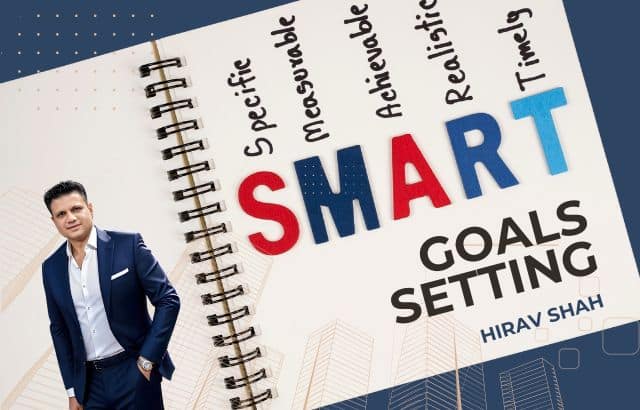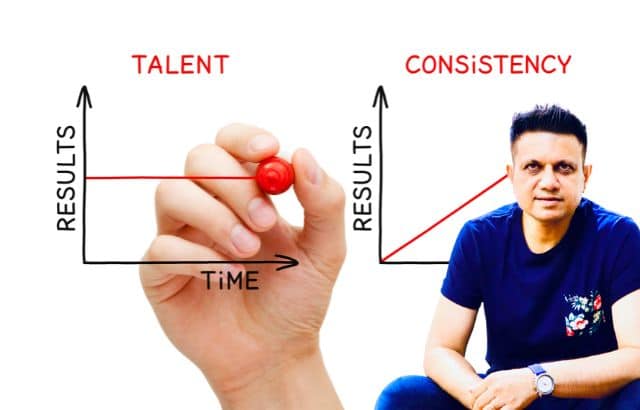Success is not merely a stroke of luck but a result of focused and deliberate actions. When you align your efforts with well-defined goals, you unlock the potential to achieve extraordinary things. One of the most effective ways to set and achieve your goals is through the SMART goal-setting framework. Whether you’re looking to grow your business, improve your health, or develop new skills, setting SMART goals can guide your journey.
In this blog, we’ll explore the SMART goals framework, share practical examples, and highlight how a strategist like Hirav Shah, known for his expertise in business strategy, can help turn your aspirations into measurable achievements.
Table of Contents
What Are SMART Goals?
SMART is an acronym that stands for:
- Specific: Clearly define the goal.
- Measurable: Track progress with clear metrics.
- Achievable: Set realistic and attainable goals.
- Relevant: Align goals with your broader objectives.
- Time-bound: Set a deadline to create urgency.
Each of these components ensures your goals are actionable, motivating, and within reach.
Breaking Down SMART Goals with Examples
- Specific: Clarity is the key to success. A specific goal answers the “who, what, where, when, and why.”
- Personal Example: Rather than saying, “I want to get fit,” a more specific goal would be: “I want to lose 10 pounds in the next three months by exercising three times per week and following a balanced diet.”
- Business Example: “Increase monthly sales revenue by 15% over the next quarter through targeted online marketing campaigns.”
- Measurable: Without a way to track your progress, it’s hard to know if you’re getting closer to your goal. Always set clear metrics to measure success.
- Personal Example: For the fitness goal, the measurement could be “Lose 10 pounds” or “Track weekly weight loss progress.”
- Business Example: “Increase customer acquisition by 20% month-over-month”—this can be tracked by monitoring the number of new clients signed up each month.
- Achievable: Set goals that challenge you but are realistic and attainable within your given resources and timeframe.
- Personal Example: If you currently work out once a week, setting a goal to work out six times a week could be overwhelming. Instead, aim for three workouts per week to make the goal achievable.
- Business Example: A startup shouldn’t set an unrealistic goal of making $1 million in the first month. A more attainable goal might be to generate $10,000 in revenue in the first quarter, then scale gradually.
- Relevant: Ensure that your goal matters and is aligned with your broader ambitions. It should contribute to your personal or professional growth.
- Personal Example: If your long-term goal is to become a published author, setting a goal to “write 1,000 words daily” is relevant and directly supports that ambition.
- Business Example: For a company aiming for expansion, a relevant goal might be to “launch two new products by the end of the year” to drive growth.
- Time-bound: Create a sense of urgency by setting a clear deadline for achieving your goal.
- Personal Example: A SMART goal could be: “Run a 5k race in 6 months,” which gives you a defined timeframe to work toward.
- Business Example: “Achieve a 20% increase in sales in the next 6 months” establishes a clear timeline for execution.
The Role of a Business Strategist in Setting SMART Goals
A business strategist plays a crucial role in guiding individuals and organizations to set goals that are not only realistic but also aligned with long-term success. Hirav Shah, a renowned business strategist, emphasizes the importance of strategic thinking in goal setting. He helps businesses break down complex goals into manageable, SMART components that drive success.
Hirav Shah’s Strategic Approach to Goal Setting
Hirav Shah works with businesses to define clear and actionable objectives, ensuring that they:
- Break down large goals into smaller, manageable tasks.
- Set measurable milestones to track progress.
- Stay flexible to adjust strategies based on new opportunities or challenges.
Example: Let’s say a company wants to expand into a new market. Hirav Shah might advise them to set the following SMART goals:
- Specific: “Expand into two new cities within the next 6 months.”
- Measurable: “Secure 5 clients in each city within the first quarter.”
- Achievable: “Allocate a marketing budget for targeted campaigns in both cities.”
- Relevant: Expanding into new markets is essential for business growth.
- Time-bound: “Complete expansion in 6 months.”
By following these steps, businesses can strategically grow and increase their chances of success.
How SMART Goals Drive Growth: A Simple Calculation
Let’s consider a small business aiming to increase monthly sales by 10% over the next three months.
- Initial Monthly Revenue: $50,000
- SMART Goal: Increase sales by 10% each month for three months.
Here’s how the sales revenue would grow:
- Month 1: $50,000 × 1.10 = $55,000 (Target)
- Month 2: $55,000 × 1.10 = $60,500 (Target)
- Month 3: $60,500 × 1.10 = $66,550 (Target)
By setting clear, measurable goals, this business will achieve a $16,550 increase in monthly sales within just three months.
FAQs on SMART Goal-Setting
Q1: What are the benefits of setting SMART goals?
SMART goals clarify your vision, help you stay focused, and ensure you’re making measurable progress toward your desired outcomes. They give you a clear action plan and milestones to track your success.
Q2: Can SMART goals work for both personal and business success?
Absolutely! SMART goals can be applied to any area of your life, from improving your health to growing your business, learning new skills, or advancing your career.
Q3: How can I break down big goals into SMART goals?
Start by breaking down the larger goal into smaller, manageable steps. Each step should meet the SMART criteria—specific, measurable, achievable, relevant, and time-bound.
Q4: How can I stay motivated to achieve my SMART goals?
Celebrate small wins along the way and regularly review your progress. Adjust your plans if necessary, and remind yourself why your goal matters to stay motivated.
Q5: How can Hirav Shah help me with my SMART goals?
A strategist like Hirav Shah helps you develop a comprehensive plan by aligning your goals with your long-term vision, guiding you through the process, and ensuring that the goals are actionable and strategically sound.
Conclusion: Make SMART Goals Work for You
The SMART goal-setting framework is a powerful tool for achieving both personal and business success. By setting goals that are specific, measurable, achievable, relevant, and time-bound, you create a clear roadmap to reach your objectives. Whether you’re an individual aiming for personal growth or a business owner looking to scale, setting SMART goals will give you the clarity and motivation needed to succeed.
Remember, as Hirav Shah advises, strategic thinking is key—break down big ambitions into manageable SMART goals, and execute with focus. The journey toward your success starts with a clear and actionable plan.
Mindset for Success by Hirav Shah
The book “Mindset for success” by author Hirav Shah explains how to shift from limitations to limitless thinking through focus and daily discipline.
Author Hirav Shah’s book “Mindset for success” transforms the way entrepreneurs think, act, and attract success—proving that mindset truly drives everything.

















